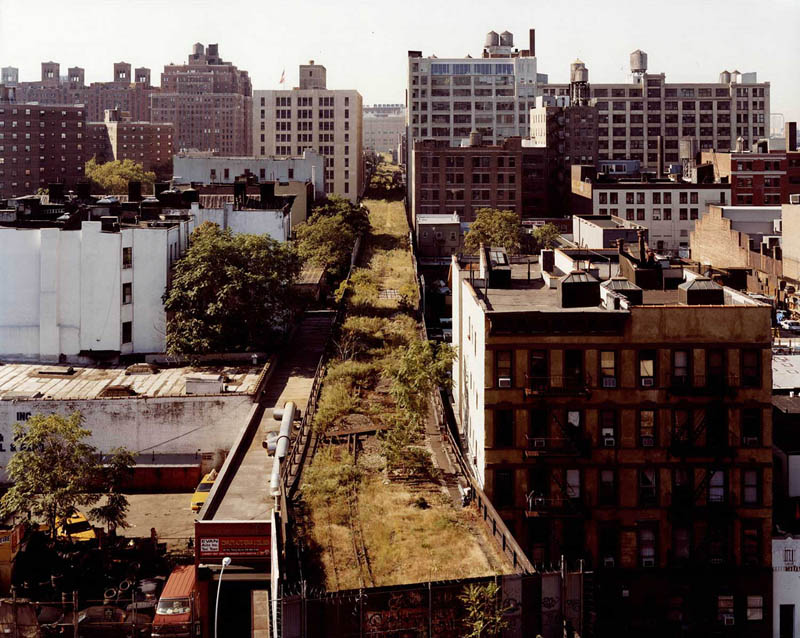
The High Line is a public
park built on a 1.45-mile-long (2.3 km) elevated rail structure running
from Gansevoort Street to West 34th Street on Manhattan’s West Side.
Previously, the High Line was a freight rail line, in operation from
1934 to 1980. It carried meat to the meatpacking district, agricultural
goods to the factories and warehouses of the industrial West Side, and
mail to the Post Office.
The area has recently been taken over by the NYC Department of Parks
& Recreation where a non-profit organization ‘Friends of the High
Line’ builds and maintains this incredible public space. Phase II of the
High Line just opened last week (June 8, 2011) to much fanfare. The
High Line is sure to be a popular destination for tourists and New
Yorkers alike for years to come.
Details on the park along with a brief history and construction
overview can be found below amongst the stunning gallery of photographs
of this incredible space. Enjoy!
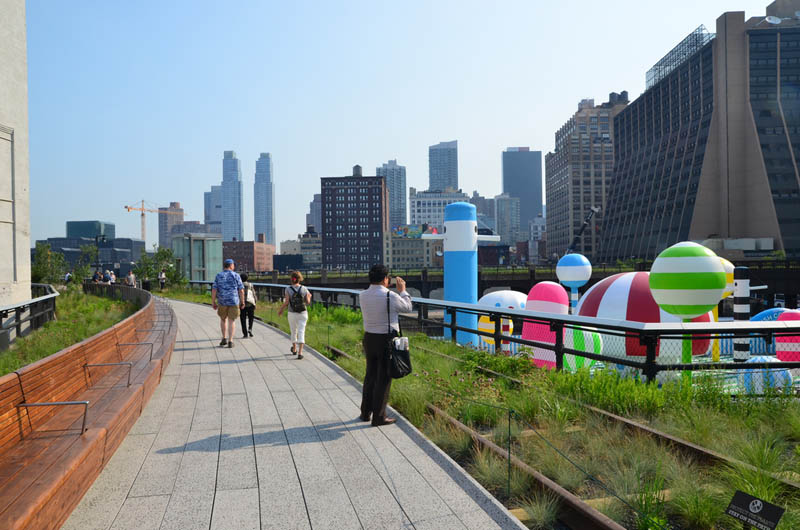
Photograph by SPECIALKRB
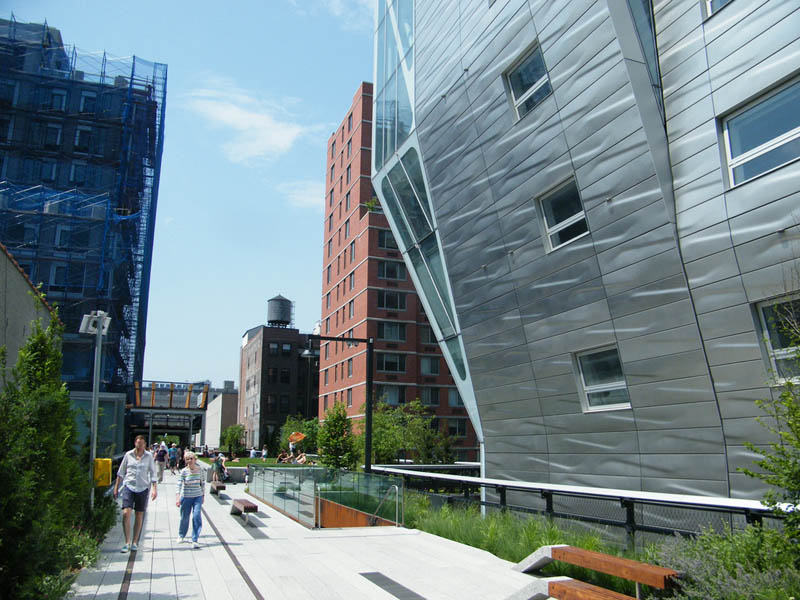
Photograph by LENNY SPIRO
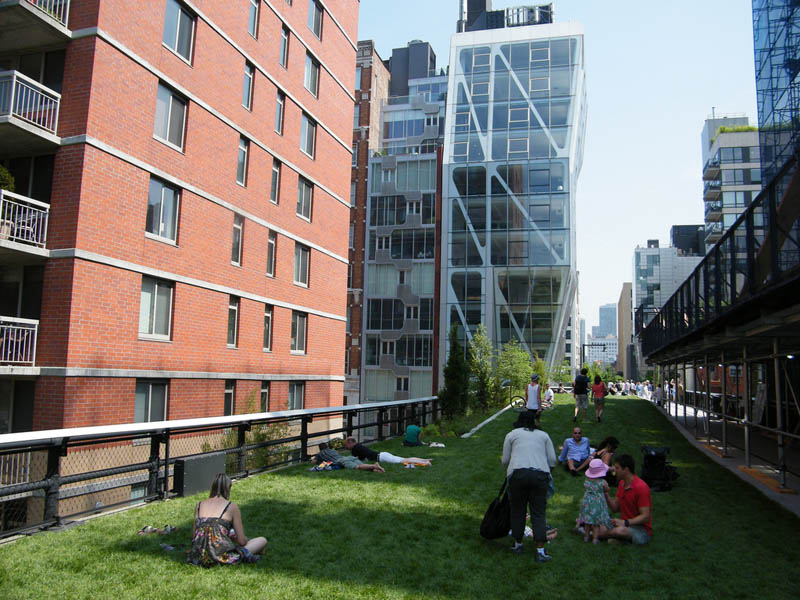
Photograph by LENNY SPIRO
THE HIGH LINE PARK HISTORY: ELEVATED RAILWAY TIMELINE
The High Line was built in the 1930s, as part of a massive public-private infrastructure project called the West Side Improvement. It lifted freight traffic 30 feet in the air, removing dangerous trains from the streets of Manhattan’s largest industrial district. No trains have run on the High Line since 1980. Friends of the High Line, a community-based non-profit group, formed in 1999 when the historic structure was under threat of demolition. A brief timeline
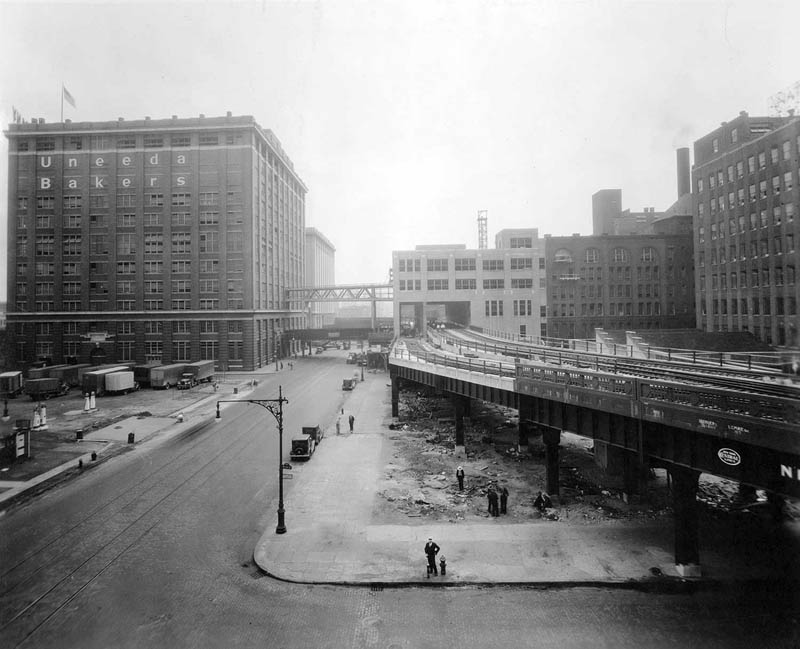
Photograph via thehighline.org
1847: The City of New York authorizes street-level railroad tracks down Manhattan’s West Side.
1851 – 1929: So many accidents occur between freight trains and street-level traffic that 10th Avenue becomes known as Death Avenue. For safety, men on horses, called the West Side Cowboys, ride in front of trains waving red flags.
1929: After years of public debate about the hazard, the City and State of New York and the New York Central Railroad agree on the West Side Improvement Project, which includes the High Line. The entire project is 13 miles long, eliminates 105 street-level railroad crossings, and adds 32 acres to Riverside Park. It costs over $150 million in 1930 dollars—more than $2 billion today.
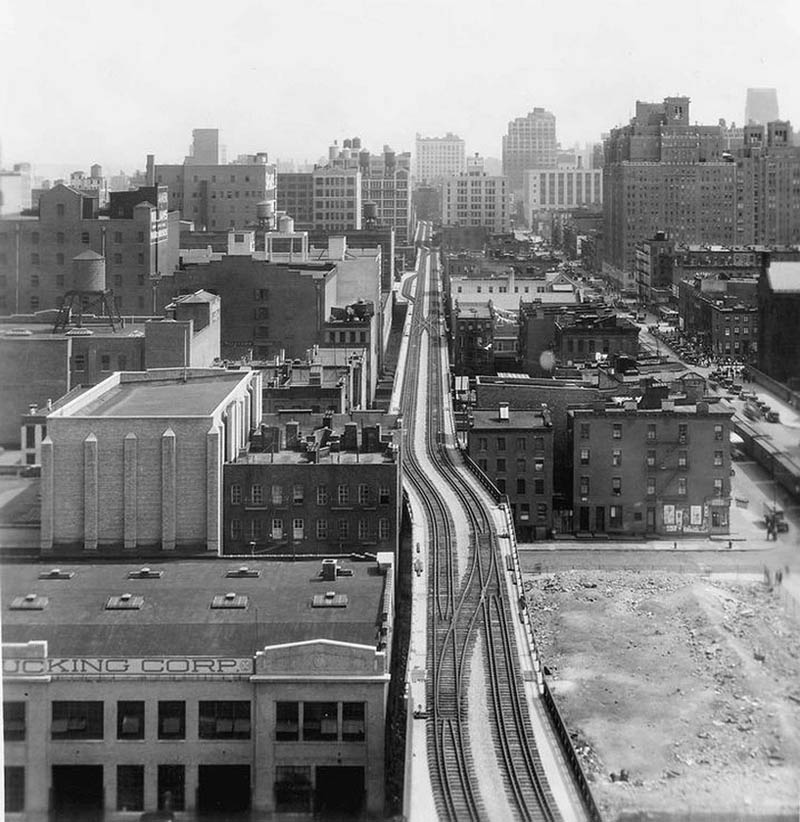
Photograph via thehighline.org
1934: The High Line opens to trains. It runs from 34th Street to St. John’s Park Terminal, at Spring Street. It is designed to go through the center of blocks, rather than over the avenue, to avoid creating the negative conditions associated with elevated subways. It connects directly to factories and warehouses, allowing trains to roll right inside buildings. Milk, meat, produce, and raw and manufactured goods come and go without causing street-level traffic.
1950s: Growth of interstate trucking leads to a drop in rail traffic, nationally and on the High Line.
1960s: The southernmost section of the High Line is demolished.
1980: The last train runs on the High Line pulling three carloads of frozen turkeys.
Mid-1980s: A group of property owners lobbies for demolition of the entire structure. Members of this group own land under the High Line that was purchased at prices reflecting the High Line’s easement. Peter Obletz, a Chelsea resident, activist, and railroad enthusiast, challenges demolition efforts in court and tries to re-establish rail service on the Line.
1999: Friends of the High Line is founded by Joshua David and Robert Hammond, residents of the High Line neighborhood, to advocate for the High Line’s preservation and reuse as public open space.
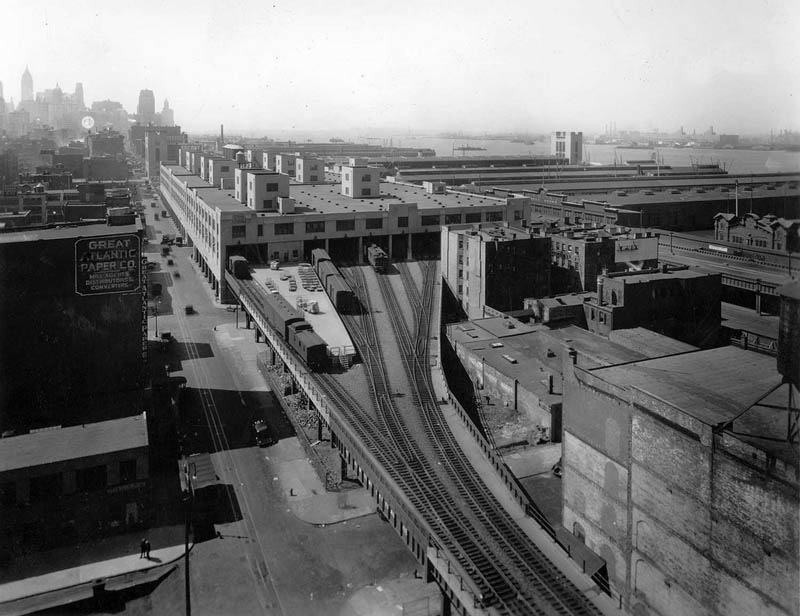
Photograph via thehighline.org
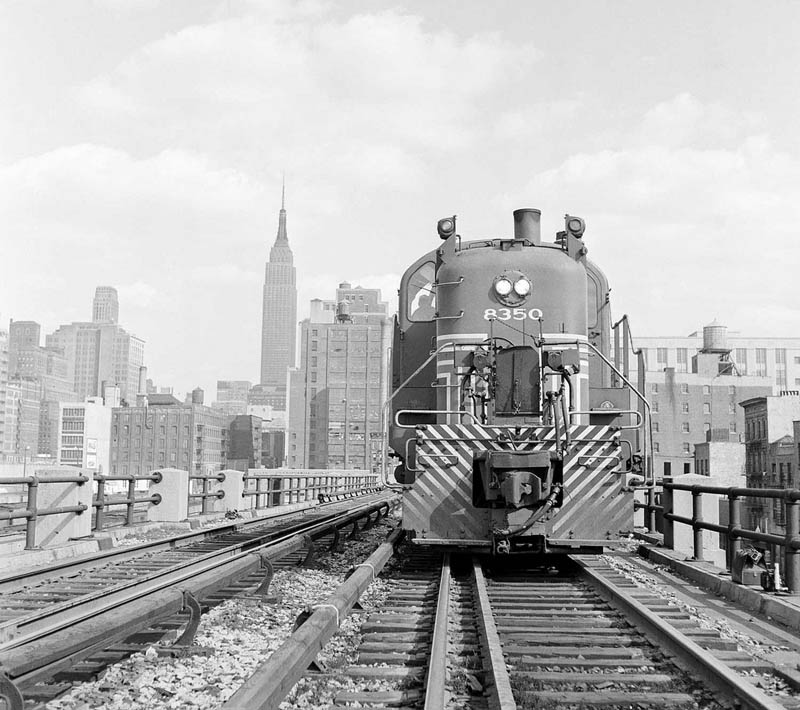
Photograph via thehighline.org
DESIGN AND CONSTRUCTION OF THE HIGH LINE PUBLIC PARK
2001 – 2002: The Design Trust for Public Space provides a fellowship for architect Casey Jones to conduct research and outreach for “Reclaiming the High Line,” a planning study jointly produced by the Design Trust and Friends of the High Line, which lays out planning framework for the High Line’s preservation and reuse.
March 2002: Friends of the High Line gains first City support—a City Council resolution advocating for the High Line’s reuse.
October 2002: A study done by Friends of the High Line finds that the High Line project is economically rational: New tax revenues created by the public space will be greater than the costs of construction.
December 2002: The City files with the federal Surface Transportation Board for railbanking, making it City policy to preserve and reuse the High Line.
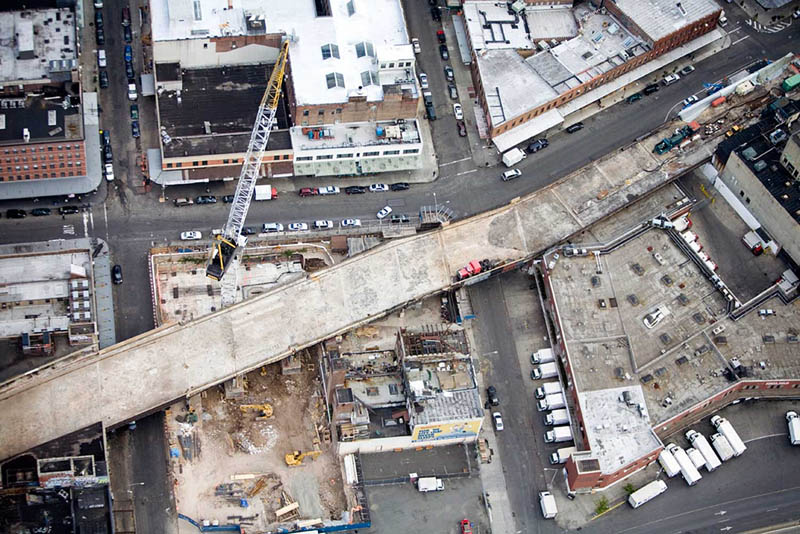
Photograph via thehighline.org
January – July 2003: An open ideas competition, “Designing the High Line,” solicits proposals for the High Line’s reuse. 720 teams from 36 countries enter. Hundreds of design entries are displayed at Grand Central Terminal.
July 2003: Friends of the High Line and the City jointly testify before the Surface Transportation Board in support of High Line reuse.
March – September 2004: Friends of the High Line and the City of New York conduct a process to select a design team for the High Line. The selected team is James Corner Field Operations, a landscape architecture firm, Diller Scofidio + Renfro, an architecture firm, and experts in horticulture, engineering, security, maintenance, public art, and other disciplines.
September 2004: The State of New York, CSX Transportation, Inc. (the railroad company), and the City of New York jointly file with the Surface Transportation Board to railbank the High Line.
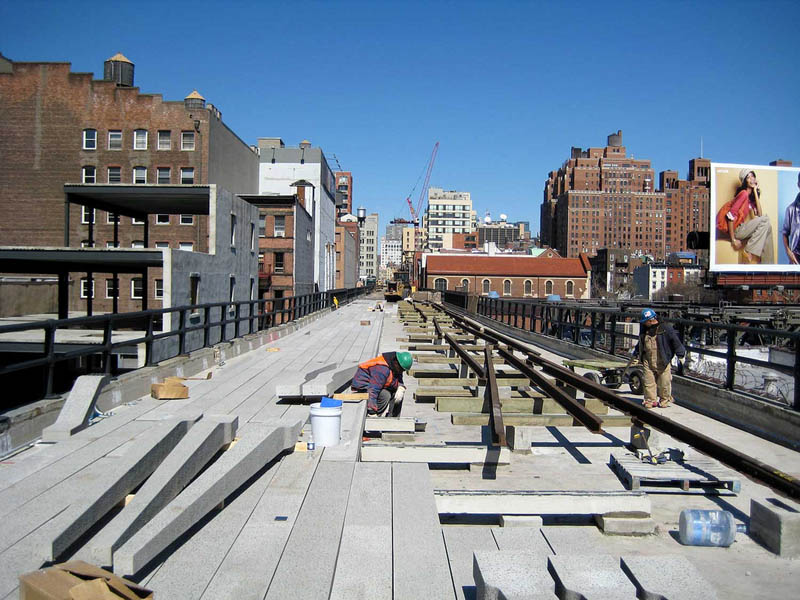
Photograph via thehighline.org
April 2005: An exhibition showcasing the preliminary design by James Corner Field Operations and Diller Scofidio + Renfro opens at the Museum of Modern Art.
June 2005: The Surface Transportation Board issues a Certificate of Interim Trail Use for the High Line, authorizing the City and railroad to conclude railbanking negotiations.
November 2005: The City takes ownership of the High Line from CSX Transportation, Inc., (which donates the structure), and the City and CSX sign a Trail Use Agreement. Taken together, these two actions effectively preserve the High Line south of 30th Street.
April 2006: Groundbreaking is celebrated on the High Line with the lifting of a rail track. The first phase of construction on Section 1 of the High Line begins.
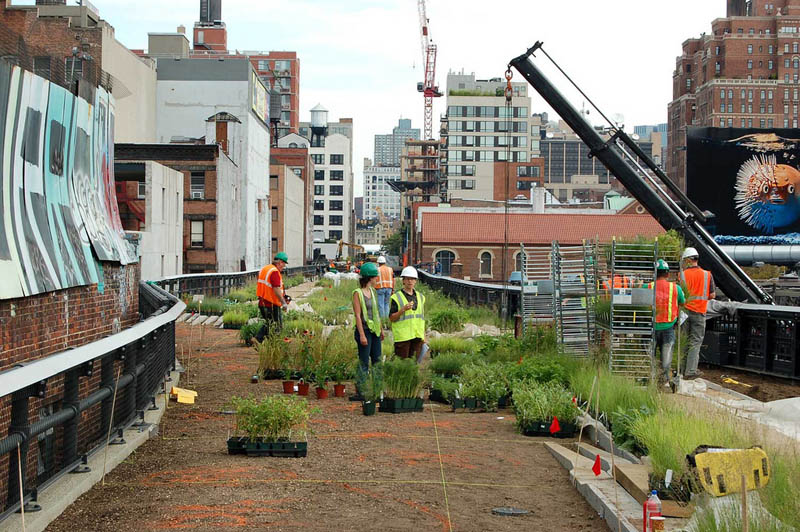
Photograph via thehighline.org
April 2006: Construction begins on Section 1 (Gansevoort Street to 20th Street). Tracks, ballast, and debris are removed, and the tracks are mapped, tagged, and stored (some will be reinstalled in the park landscape). This is followed sandblasting of steel, repairs to concrete and drainage systems, and installation of pigeon deterrents underneath the Line.
2008: Landscape Construction begins on Section 1, with construction and installation of pathways, access points, seating, lighting, and planting.
June 2008: Final designs are released for the High Line’s transformation to a public park.
June 9, 2009: Section 1 (Gansevoort Street to West 20th Street) opens to the public.
June 8, 2011: Section 2 (West 20th Street to West 30th Street) will open to the public.
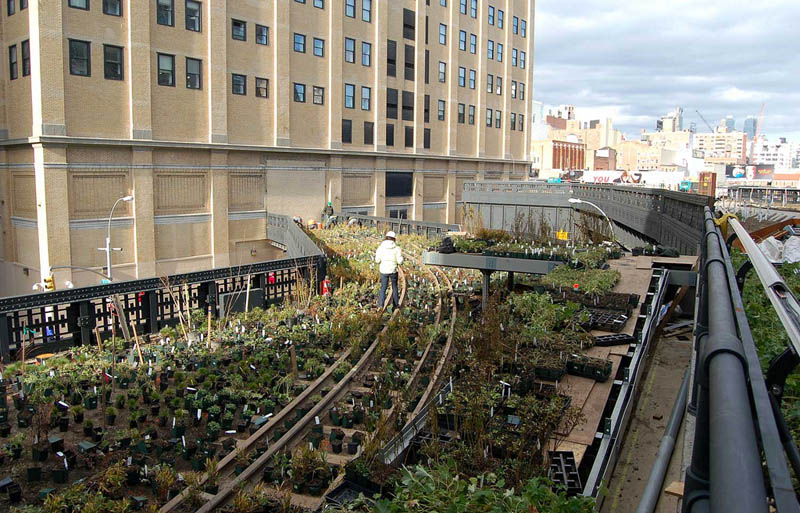
Photograph via thehighline.org
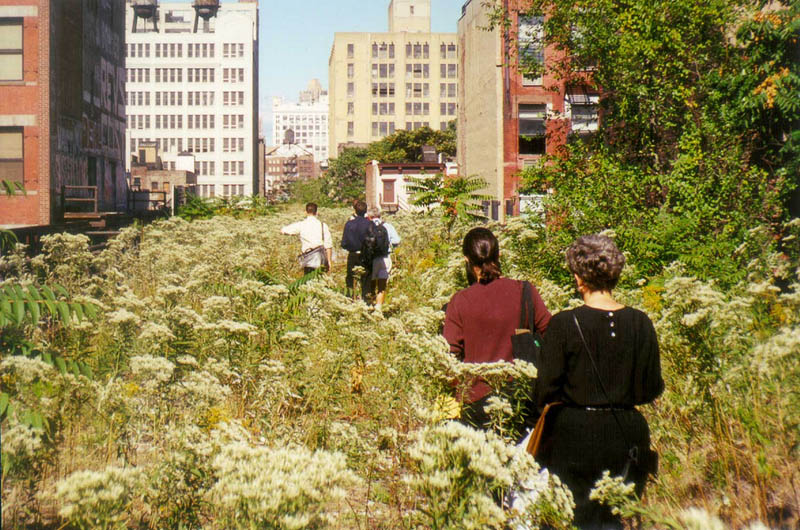
Photograph via thehighline.org
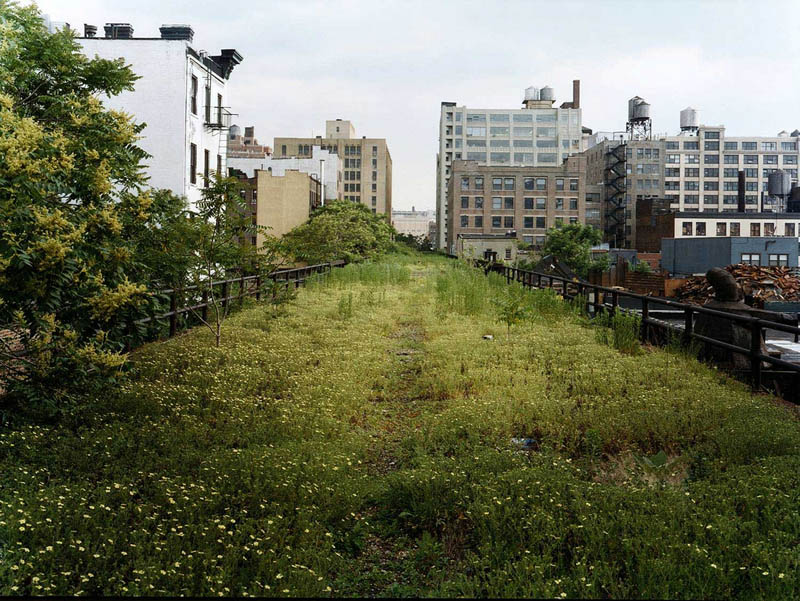
Photograph via thehighline.org
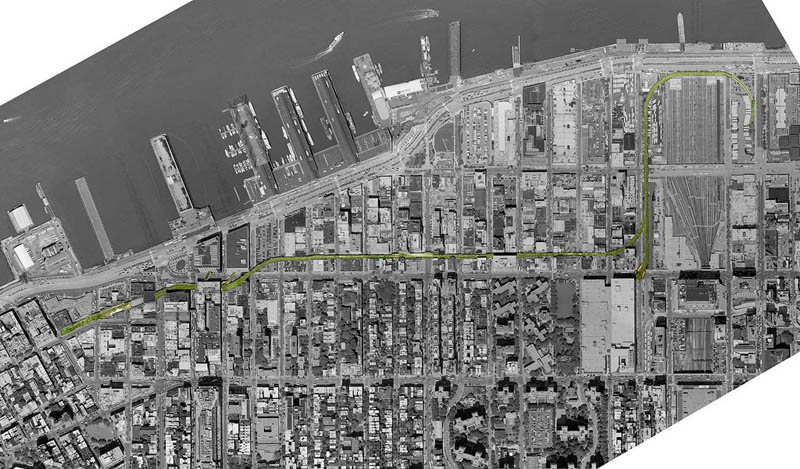
THE HIGH LINE PUBLIC PARK INFORMATION
- The High Line is located on Manhattan’s West Side. It runs from Gansevoort Street in the Meatpacking District to West 34th Street, between 10th & 11th Avenues
- Winter park hours are 7:00 AM to 8:00 PM. Spring, summer, and fall hours are 7:00 AM to 11:00 PM. The High Line is equipped with an innovative lighting design, so that the park can remain open in the evening
- The entire High Line is wheelchair accessible
- Access to the High Line is possible via any of the following access points: Gansevoort Street, 14th Street (elevator access), 16th Street (elevator access), 18th Street, 20th Street, 23rd Street (elevator access coming soon), 26th Street, 28th Street, 30th Street (elevator access)
- Dogs are not allowed because the park’s planking system was designed to use direct rainwater runoff towards the planting beds. This means that dog urine, even if it falls on the path and not into the plantings, ends up in the soil. Dog urine is highly acidic, and dangerous to the roots of plants. In addition, the High Line, while very long, is also very narrow, and pets on leashes would overcrowd the paths on the High Line
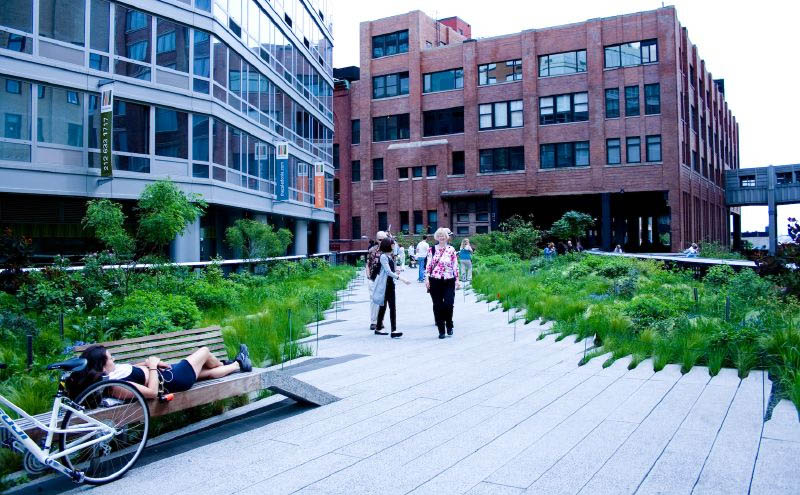
Photograph by ERCWTTMN
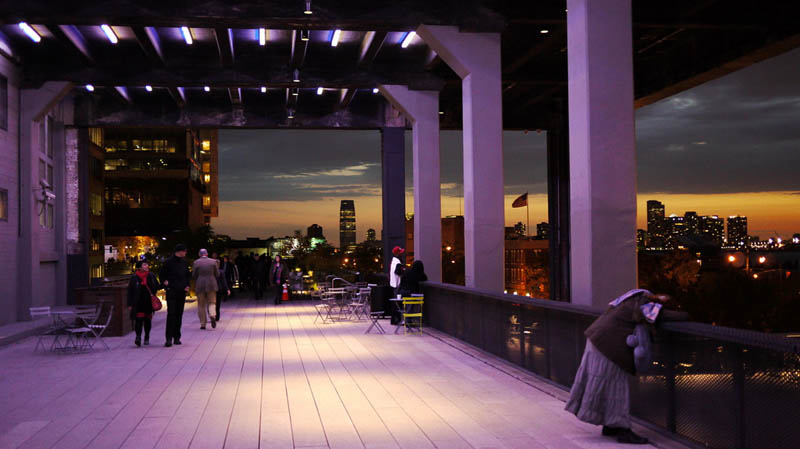
Photograph by SNAPSHOTS ONLY
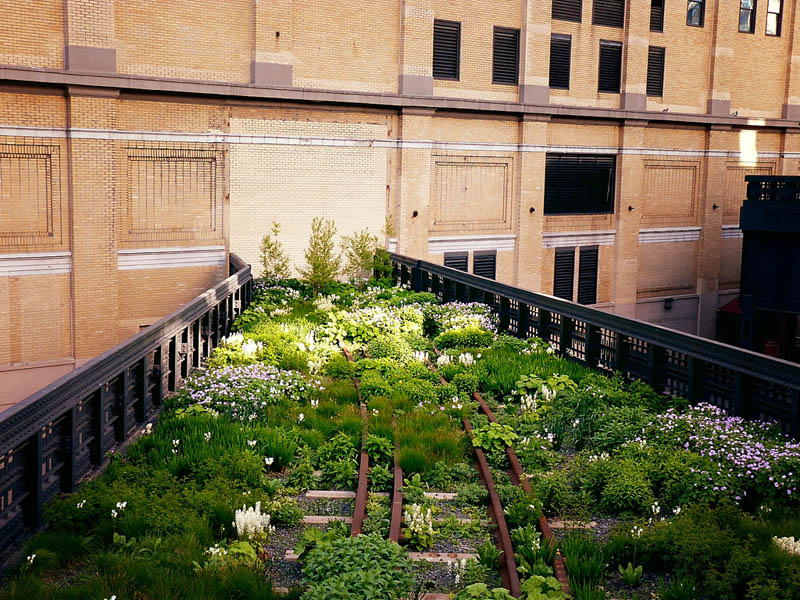
Photograph by VIVIENNE GUCWA
THE HIGH LINE GARDENS AND PLANTS
What was growing here before?
Self-seeded grass, trees and other plants grew on the out-of-use elevated rail tracks during the 25 years after the trains stopped running. For photos of the High Line during its time without usage, please visit our Image Galleries.
How many plants are native to New York?
161 out of the 210 plant species in the design of Section 1 of the High Line are native to New York.
How are the plants watered?
The High Line’s green roof system is designed to allow the plants to retain as much water as possible. In addition, there is an irrigation system installed with options for both automatic and manual watering. This system will be particularly important in the first few years as the plants establish themselves, but less necessary over time.
How is the High Line sustainable?
The High Line is inherently a green structure. It re-purposes of a piece of industrial infrastructure as public green space. The High Line landscape functions essentially like a green roof; porous pathways contain open joints, so water can drain between planks and water adjacent planting beds, cutting down on the amount of storm-water than runs off the site into the sewer system.
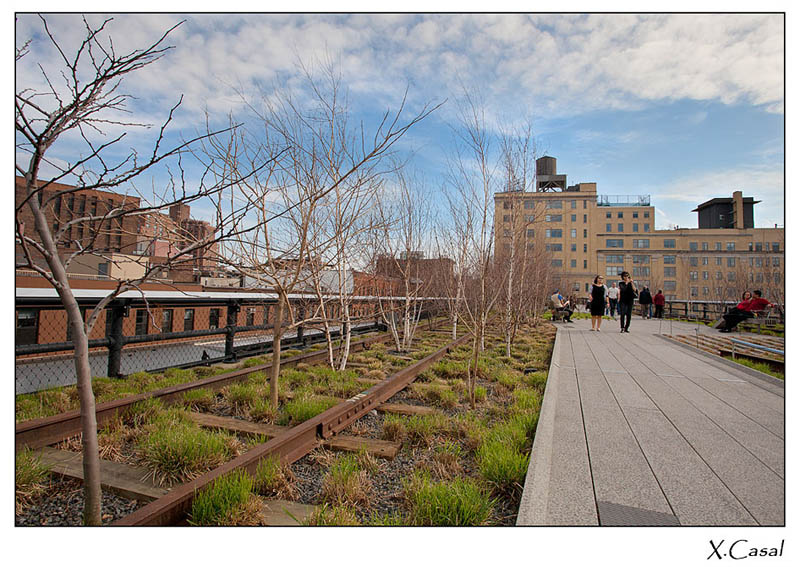
Photograph by XOSE CASAL
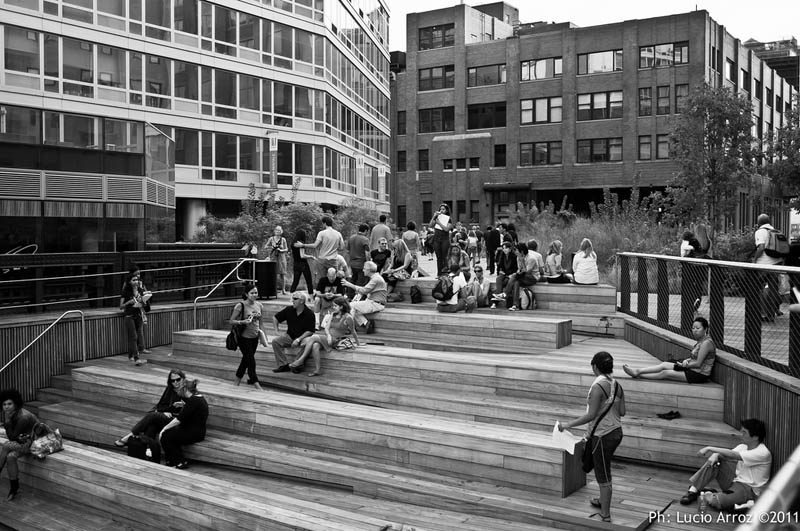
Photograph by LAGS STUDIO
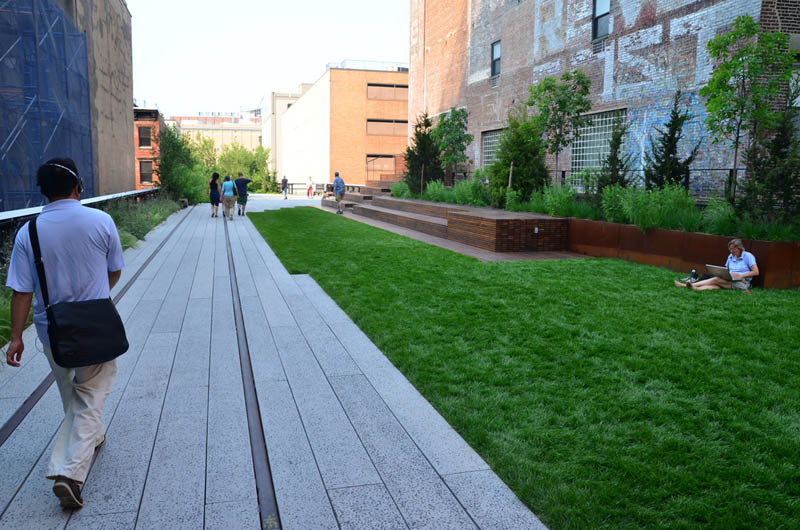
Photograph by SPECIALKRB
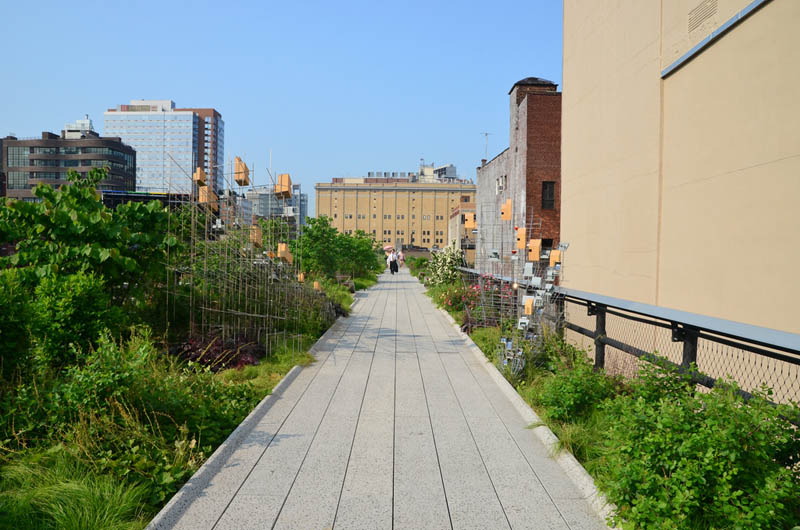
Photograph by SPECIALKRB
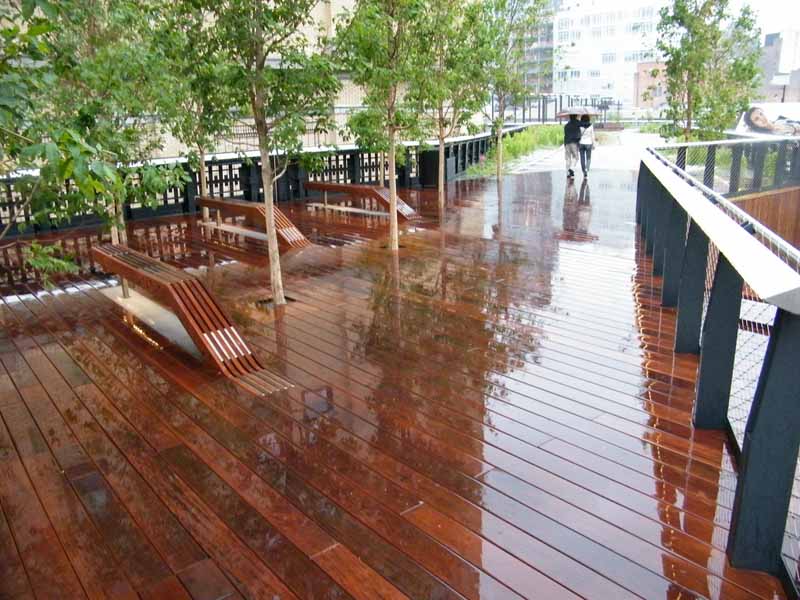
Photograph by LENNY SPIRO
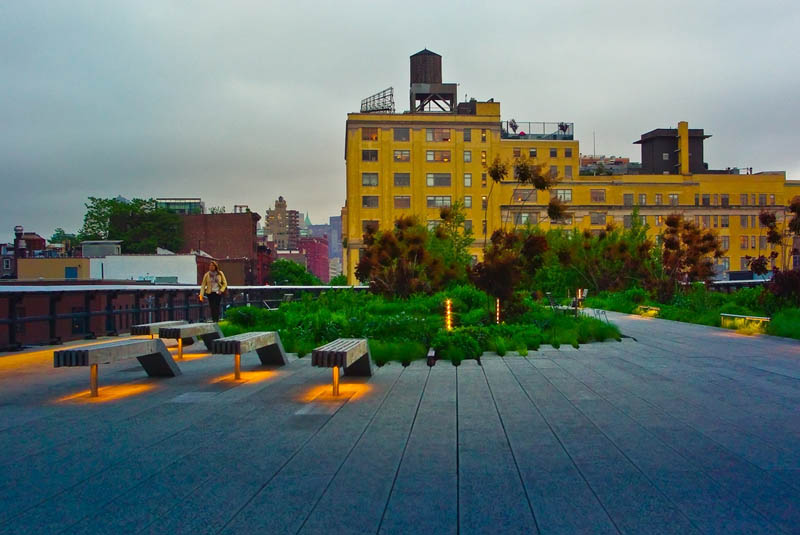
Photograph by OLIVIER PERRIN
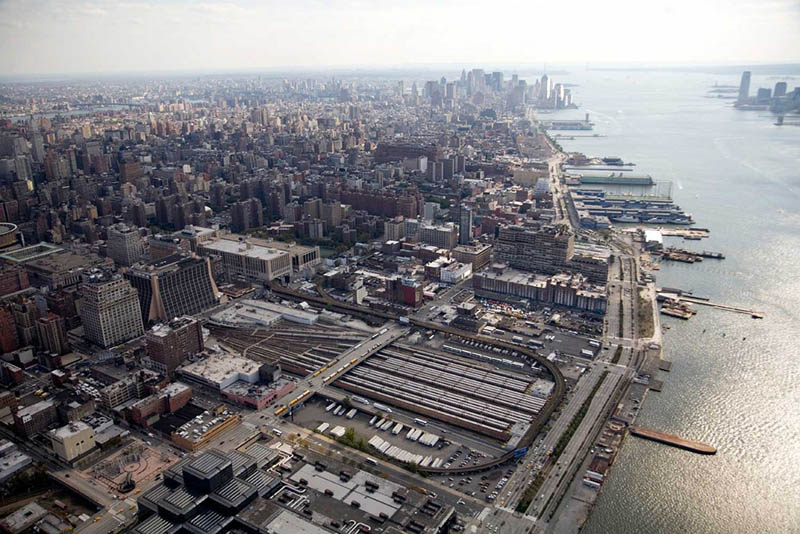

No comments:
Post a Comment
Note: Only a member of this blog may post a comment.